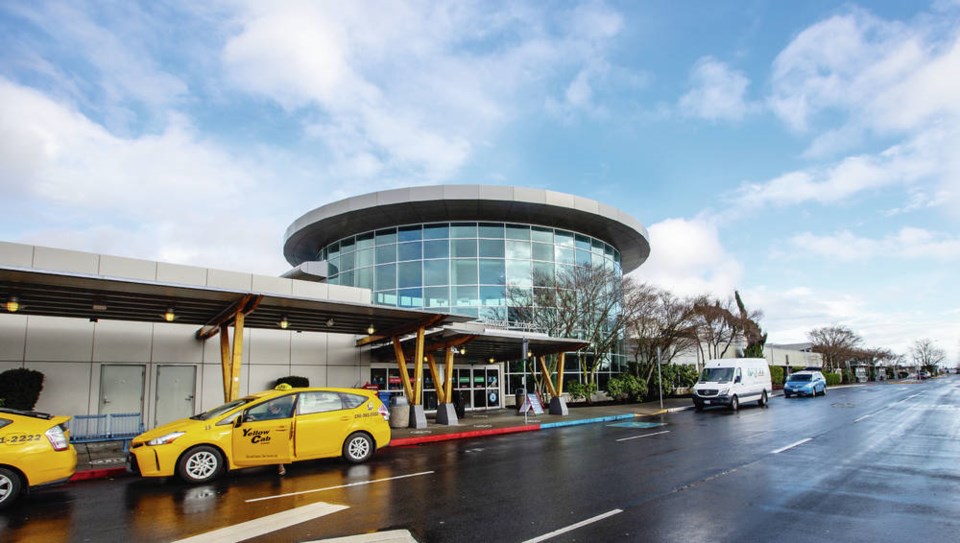The man responsible for the day-to-day running of Victoria International Airport says thereŌĆÖs no question the city will face a robust return to air travel when the pandemic passes.
But there are no end of questions about when that might be, said Geoff Dickson, chief executive of the airport authority.
ŌĆ£Is it June, August, or October? We donŌĆÖt know,ŌĆØ he said. ŌĆ£Whenever the health authorities are in a position to say ŌĆśgo, travelling is OK,ŌĆÖ restrictions are lifted domestically and people have a degree of confidence in travelling then I think consumer fears will disappear.
ŌĆ£Then we will see things change very quickly.ŌĆØ
That change canŌĆÖt come soon enough for the aviation industry, which has been bleeding red ink since the pandemic hit and health regulations and essential-travel advisories scuttled most travel plans.
The pandemic has cost thousands of airline workers and airport workers their jobs as flight schedules have been cut, airlines idled jets and aircraft orders were cancelled.
Victoria International Airport, which has not laid off staff so far, has seen its passenger numbers drop from nearly two million in 2019 to 590,000 in 2020.
Dickson said the 70 per cent reduction in passenger numbers last year is rosy compared to projections for 2021 given last year there were two normal months of air travel in January and February.
ŌĆ£But we think we will bounce back in 2022, somewhere between 50 and 75 per cent of 2019ŌĆÖs passenger levels,ŌĆØ he said.
ŌĆ£Certain segments of the marketplace will come back very quickly,ŌĆØ he said, suggesting people are keen to visit family and friends and get away on short-haul vacations, while long-haul vacation travel will take longer to find its feet.
Business travel and travel for conferences is expected to take a hit, at least initially, as many companies have adapted to conducting meetings with technology.
Dickson holds out hope there will be a decent domestic travel market this year, ideally coming in some of the key summer months, as the countryŌĆÖs vaccination program reaches more people. And he remains optimistic that the industry has not been changed forever by the COVIDŌĆæ19 pandemic. ŌĆ£All the forecasts IŌĆÖve seen say it will take until 2023-24 to get back to the levels of what it was,ŌĆØ he said.
The bigger problem may be what is left of the industry when the restrictions start to relax.
ŌĆ£The longer it goes without federal help, I worry about the [major airlinesŌĆÖ] ability to restart,ŌĆØ he said.
A federal relief package for the industry, expected to be worth at least $9 billion, is believed to be close to a reality.
WestJet and Air sa╣·╝╩┤½├Į have laid off thousands and parked jets around the country. They have severely cut back service and capacity on the major routes they continue to fly.
ŌĆ£The big question [when it reopens] is where will the airlines deploy their fleet? Will they focus on hubs and ignore some regional markets?ŌĆØ he said.
That could have an impact in Victoria, where airport revenue has already been cut in half.
With revenue lost from aircraft movements, parking, and renegotiated rental terms with terminal tenants, the airport has had to significantly scale back capital spending. Its major revenue source is currently from leasing out airport land.
Last year, the airport reported a net loss of $8.2 million versus a profit of $9.2 million in 2019.
Dickson said capital spending was cut by 60 per cent last year ŌĆö it would have been more but several projects were very close to completion ŌĆō and this year they have budgeted only $2 million for safety, maintenance and touchless-technology projects.
ŌĆ£Typically, we would spend $20 million to $30 million,ŌĆØ he said.
One of the projects that was put on a back burner when revenue got tight last year was a temporary fix for a control tower blind spot on a new taxiway extension.
Parts of a 366-metre extension of the taxiway, completed in 2020 at a cost of $4.3 million, sit in the control towerŌĆÖs blind spot.
A temporary fix, using a series of cameras, was shelved when money dried up in the face of the pandemic. The cost of that fix was estimated at between $100,000 and $400,000.
The longer-term fix is the relocation of the control tower, a project Nav sa╣·╝╩┤½├Į, the company responsible for air traffic control, had initiated a few years ago.
While a site for a new tower has been agreed upon, no work has been done.
Dickson sees it as neither a priority nor a concern as the airport has been able to function safely for decades without extra cameras. He pointed out with airlines cutting routes, no jets coming or going from the airport would use the extension. The airport only sees regional turboprop aircraft these days.
A Nav sa╣·╝╩┤½├Į spokesman said the company expects to move on a solution this year.
The airport is also planning for a more sustainable future.
This week the authority released a sustainability plan.
Included in the goals are plans to increase the waste-diversion rate at the airport to 75 per cent in 2025 and 90 per cent by 2030, become carbon neutral by 2030, restore 600 metres of creek area by 2025 ŌĆō it has already restored more than 1,500 metres of creek ŌĆö and reduce water use per passenger by 25 per cent by 2030.



